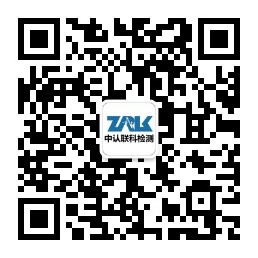With the cancellation of the 3.5mm audio interface on flagship phones of major mobile phone manufacturers, more and more Bluetooth audio products have received market attention. Bluetooth audio products such as Bluetooth headsets, Bluetooth speakers, Bluetooth headsets, and wireless Bluetooth products including mobile phones, remote controls, and wireless doorbells are becoming more abundant. Wireless electronic products have always had a high degree of fierce attention in the Japanese market. Wireless products need to pass TELEC certification before they can be sold in Japan. So what test items do Bluetooth products need to be telec certified?
Toy CCC certification process and required information
In order to enable consumers to have a clearer understanding of the certification marks marked on the purchased products and to reduce the various certification costs borne by product manufacturers, the Korea Institute of Technology and Standards (kats) announced on August 20, 2008 that it will The new certification system KC (korea certification) certification will be implemented on the 1st. The plan has been implemented first in the Ministry of Knowledge Economy since July 2009, and is expected to be extended to all departments by the end of 2010.
The Chinese Model Approval is abbreviated as SRRC certification, which is a national compulsory certification designed to distinguish between the civilian band and the military band in the wireless band. It is the technical management of the spectrum parameters and technical indicators of the radio transmission equipment before it is put into use in the development, production, import, and purchase links. Since June 1, 1999, radio component products sold and used in China must obtain radio model approval. Domestically produced, sold and used radio transmission equipment must be type approved, and the approval certificate and type approval code must be issued. The type approval code must be indicated on the label of the factory equipment.
The Chinese Model Approval is abbreviated as SRRC certification, which is a national compulsory certification designed to distinguish between the civilian band and the military band in the wireless band. It is the technical management of the spectrum parameters and technical indicators of the radio transmission equipment before it is put into use in the development, production, import, and purchase links. Since June 1, 1999, the Ministry of Information Industry (MII) of China has mandated that radio component products sold and used within the country must obtain radio model approval. Domestically produced, sold and used radio transmission equipment must be type approved, and the approval certificate and type approval code must be issued. The type approval code must be indicated on the label of the factory equipment. The State Radio Monitoring Center (SRMC) of China, formerly known as the State Radio Regulation Committee (SRRC), is the only organization in Mainland China authorized to test and certify radio model approval requirements.
The \"KC\" logo means \"Korea Certification\". The thirteen statutory mandatory signs currently used in South Korea will all be unified into the country’s unified signs. This will simplify the certification process, reduce the cost of manufacturer certification, and enable the KC logo to develop into a world-recognized brand.
On September 24, 2020, ECHA issued an enforcement report. The focus of enforcement is the restriction requirements of Annex XVII of the REACH Regulation, focusing on the inspection of lead, cadmium, and mercury in commodities. The compliance status of chromium, polycyclic aromatic hydrocarbons and phthalates was checked. In the inspection of restricted substances on 1,225 products, 221 products (17%) were found to be non-compliant, of which 155 non-compliant products from China, accounting for about 73.5 of the total number of products that did not meet REACH restrictions %. Therefore, importers of articles containing chemical substances must ensure that products placed on the EU market comply with REACH obligations to reduce unnecessary losses.
IATA recently released the 62nd edition of the DGR \"Dangerous Goods Regulations\" in 2021. The new version of DGR includes the contents of the \"ICAO 2021-2022 Technical Instructions\" issued by the International Civil Aviation Organization Dangerous Goods Group and the revised contents approved by the IATA Committee. Relevant air transportation rules including various dangerous goods and lithium batteries have been revised.
Learn the latest exciting content
